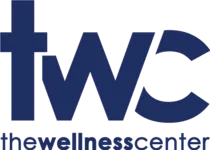We all know someone with high blood pressure (HBP), possibly a beloved family member or a lifelong friend. This common problem affects one in four American adults.1 An alarming 75% of patients with type 2 diabetes also have HBP.2
High blood pressure is particularly dangerous because, for the most part, there are no symptoms until severe damage occurs. Heart disease, stroke, kidney disease, atherosclerosis, and eye disease are some of the serious problems that may result from untreated HBP.
Normal blood pressure is in the range of 120/80 ("120 over 80"). The first number represents the systolic pressure, the pressure at which your heart pumps blood into your arteries. The second number represents the diastolic pressure, the pressure in your arteries between heart beats (the resting pressure). The systolic pressure can increase, in the short term, in response to stress or physical activity. Systolic pressures over 140 and diastolic pressures over 90 suggest the possibility of HBP. Blood pressure readings should be repeated several times, over a period of several days, before a diagnosis of HBP is considered.
Medical treatment for HBP consists of blood pressure-lowering medications (antihypertensives). This group of drugs is typically effective in reducing pressure, but getting the dosages right may be tricky and there may be unwelcome side effects.
Lifestyle strategies and activities (complementary medicine, lifestyle medicine) offer significant, well-documented benefits in reducing blood pressure levels. Regular, frequent exercise is an important part of all lifestyle programs targeted toward lowering blood pressure and reducing the risk of cardiovascular disease and stroke.3,4 Regular exercise makes your heart stronger, and a stronger heart pumps blood more easily and efficiently. Over time, regular exercise may reduce blood pressure levels by an average of 10mm.
Meditation is another key reducer of blood pressure levels.5 Much more than a New Age fad, meditation has consistently demonstrated benefits related to several health issues. And, meditation is easy to do. All you need is a comfortable chair or cushion that allows you to sit in a straight posture without any tension. There's no special breathing to do and you don't have to do any chanting.
To meditate, sit facing a blank wall (if possible) and let your hands relax in your lap. Tilt your head slightly downward, and let your eyes achieve a soft focus at that slightly downward angle. Breathe easily and gently. Breathe in and visualize energy going up your spine in the back. Breathe out and visualize the energy going down your spine in the front. Silently say "one". Continue up to "ten" cycles, and begin again at "one". That's it!
How long? This is completely up to you. Start with five minutes twice a day, and gradually build up to 20 minutes twice a day. You'll probably notice you're feeling much more at ease, more relaxed, with more energy during the day than before you started meditating. The benefits are powerful, and again, there is a profound effect on high blood pressure.
Your doctor of chiropractic can help participate in a complementary approach, assisting your body and you nervous system to function at peak performance.
1Undiagnosed hypertension is common among urban emergency room patients. Medscape Medical News, Sept 2, 2005 - http://www.medscape.com/viewarticle/538785.
2Schutta MH: Diabetes and hypertension. Epidemiology of the relationship and pathophysiology of factors associated with these comorbid conditions. J Cardiometab Syndr 2(2):124-130, 2007.
3High blood pressure and exercise: Why activity is key. August 11th, 2006 - http://www.mayoclinic.com/health/high-blood-pressure/HI00024.
4Zanabria E, Welch GL: Hypertension and exercise. American Fitness March-April 2003.
5Walton KG, et al. Psychosocial stress and cardiovascular disease. Effectiveness of the Transcendental Meditation program in treatment and prevention. Behav Med 28(3):106-123, 2002.
High Blood Pressure
Office Hours
Monday:
8:00 am-6:00 pm
Tuesday:
8:00 am-2:00 pm
Wednesday:
8:00 am-6:00 pm
Thursday:
10:00 am-6:00 pm
Friday:
8:00 am-6:00 pm
Saturday:
Closed
Sunday:
Closed



